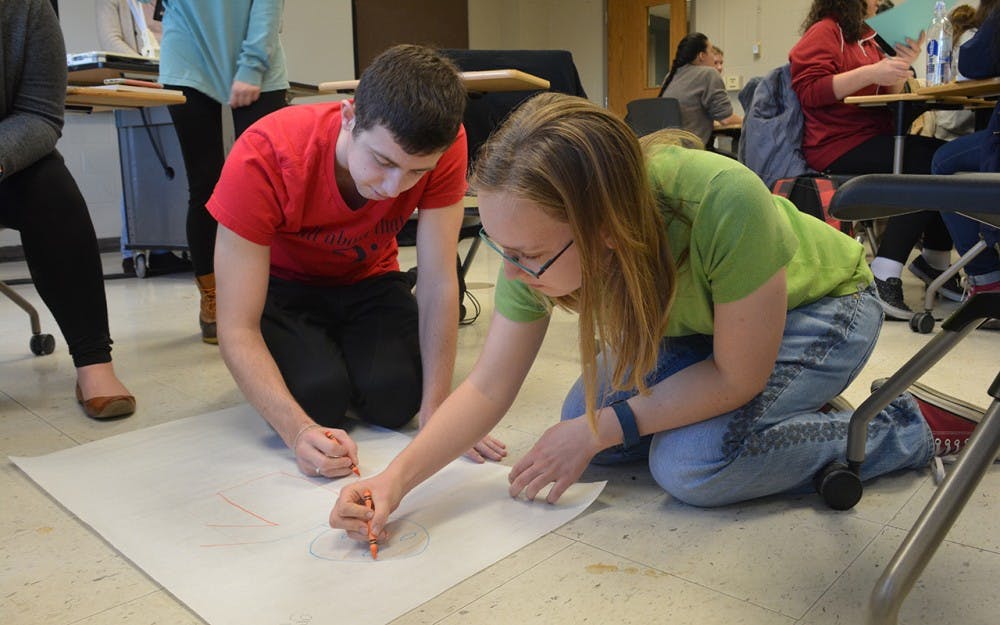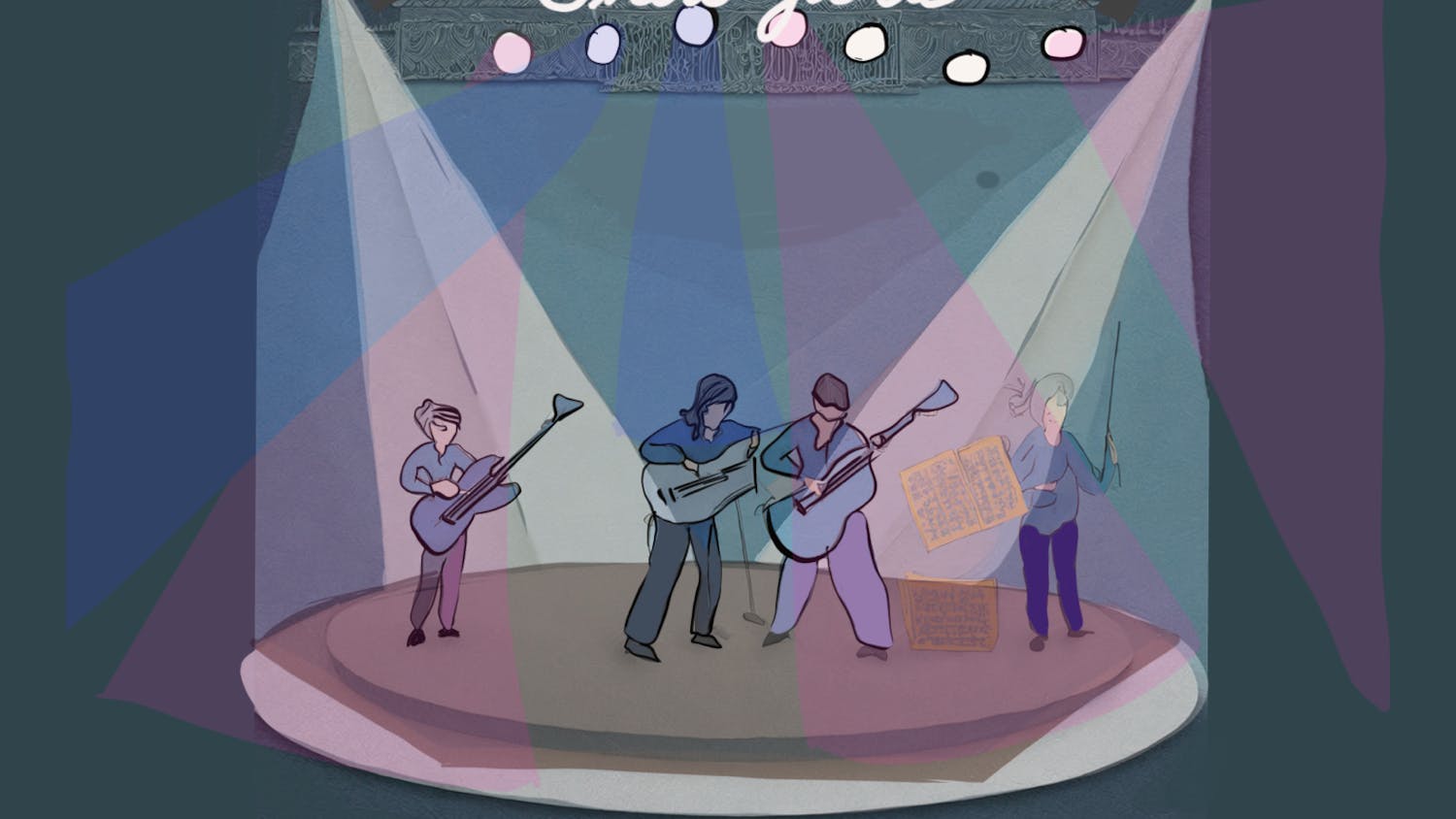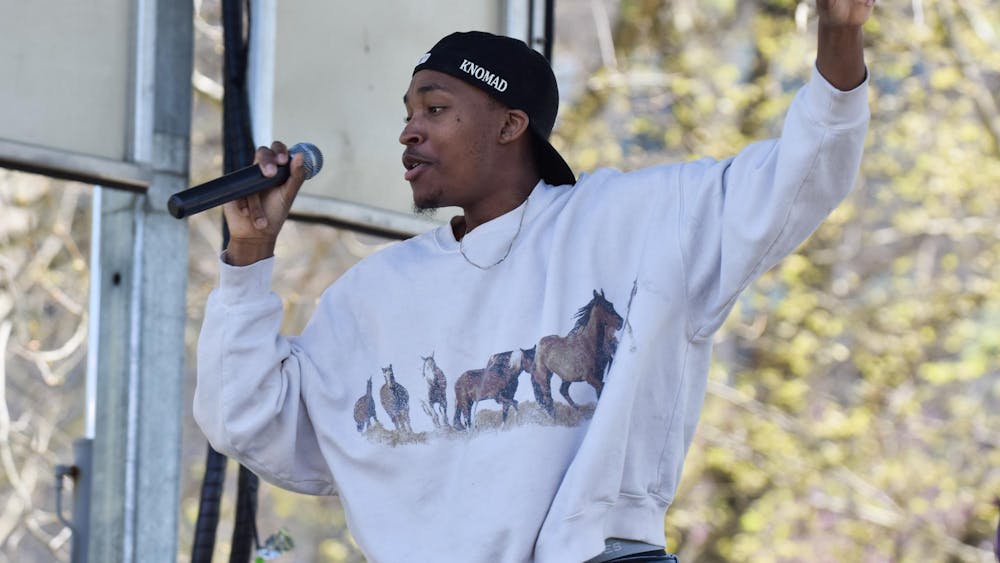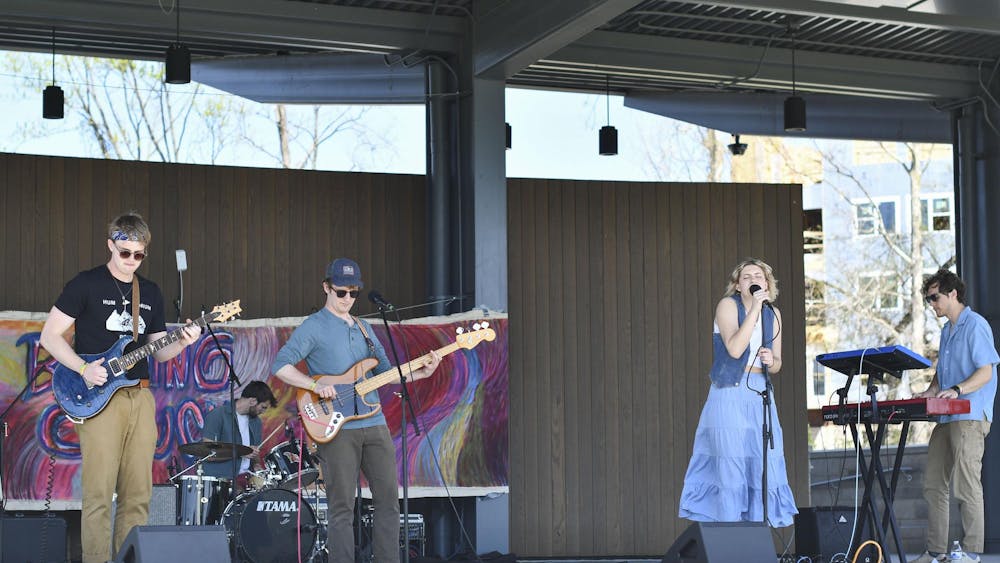With crayons in hand, IU students split up into five groups to draw superheroes. One group drew a blue-eyed white man with large biceps and a hammer and duct tape in his belt.
“He’s very white, described as Dorito-shaped,” one student said.
“He’s very problematic,” another said.
Lloyd Graham, assistant director of diversity initiatives, said superheroes like these were common earlier in history when minorities were largely absent from superhero stories.
Students discussed this lack of representation among racial minorities and women in superhero comics and films Monday during a community dialogue titled “Up, Up, and Away!”
It took place as part of the “China: Remixed” series and was inspired by Gene Yang’s graphic novel “American Born Chinese.”
As movies like “Wonder Woman” and “Black Panther” prepare to hit movie theaters, the film world has seen some progress toward increased representation, Graham said.
“We are definitely seeing some strong women and minority members coming out as superheroes,” he said. “The tide is changing in some ways.”
However, he said this progress is still limited because of desires to increase box office sales.
Graham said many minority actors and actresses have not had the same opportunities as others have, which means the actors who have risen to prominence are mostly white men.
As a result, when filmmakers cast roles, they may be likely to overlook members of minorities in attempts to bring in a larger audience.
“I think a lot of times what we view as progress is often just an illusion,” Graham said. “As a whole, most superheroes continue to fit a certain mold, and people try to deny that because of a couple more diverse characters.”
This denial of the problem is why Graham said it is necessary to continue this conversation about the representation of minorities in superhero stories and other entertainment media.
“We have to open up this dialogue and keep talking about it,” Graham said. “We can only change what we are aware and knowledgeable about.”
Graham said this dialogue is especially important when discussing superheroes because of their cultural standing as role models.
“Superheroes are the ones we’ve decided are capable of saving lives and making a difference in our community,” Graham said. “They’re who we’ve decided to hold up as role models in our communities.”
Sophomore John Chen said as an Asian-American man he never saw himself represented in superhero stories.
“When I was thinking about my favorite superheroes, I realized that none of them were Asian men,” Chen said. “But I feel I can uphold a lot of these ideas of what a superhero should embody.”
Graham said many children who do not see themselves represented are less likely to feel that they can embody the qualities of a superhero.
As a result, he said it is vital to show people, especially children, that minorities are just as capable of serving as role models and heroes as white, straight male superheroes.
This understanding of the capability of minority individuals is vital in the lives and futures of children in minority groups, Graham said.
“When kids see these heroes, it affects what they aspire to be,” Graham said. “When they see people who look like them, they are more likely to envision themselves playing similar roles. They dream bigger.”






